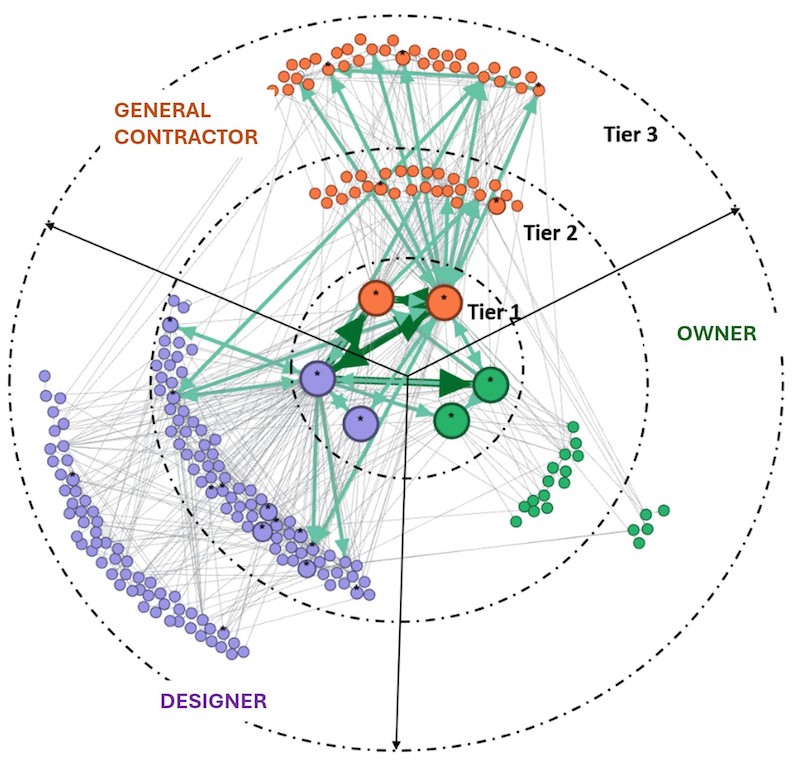Why this matters:
- Investment in multidisciplinary workforce development by the National Science Foundation creates safer infrastructure, reduces overall project costs and catalyzes innovation.
- This research contributes to the science of organizations, engineering and research and development teams across industries that employ complex multi-team systems now and in the future.
When it comes to constructing complex buildings that involve architects, engineers and construction professionals, it’s not just engineering that matters — it’s also how people talk to each other.
New interdisciplinary research from Michigan State University found that better team communication and collaboration can dramatically improve the performance of large-scale construction projects. Led by Sinem Mollaoglu, professor of construction management in the School of Planning, Design and Construction, the interdisciplinary study examined real-world teams over two years, using green-certified building projects as a testing ground.
“We found that how people communicate — not just what they do — shapes project success,” said Mollaoglu. “Teams that shared knowledge more effectively and had stronger internal networks were more resilient and better equipped to navigate challenges.”
The MSU team used tools like email analysis, surveys, meeting records and digital platforms to create “network maps” that visually showed how teams were really working together. These maps helped reveal miscommunications, pinpoint key players and suggest improvements, which provided timely feedback teams could act on during construction.
As complex projects move through planning, design and construction, those managing the work don’t just tick off tasks. They also go through intense periods of coordination and knowledge sharing. Different phases require different communication patterns, especially at transition points — like handing off designs to builders. At those moments, having the right people closely connected can prevent costly mistakes.
This research found that team members often mimic the knowledge-sharing habits of those around them. If peers are openly sharing expertise, others tend to follow suit. But not everyone is equally influenced. Project “opinion leaders,” or those seen as experts, are less likely to change their behaviors based on peer pressure. Their influence flows outward more than inward.

That makes the role of key experts especially important. Their position in a project’s communication network can shape how knowledge moves between disciplines and organizations. They’re not just sources of information but bridges between different parts of a project, helping to span gaps and bring diverse expertise together.
So how can architecture, engineering and construction project teams improve collaboration? Mollaoglu said the answer lies in intentional network design. That means strategically assigning personnel, engaging experts in the right places, and building teams that can adapt and bounce back from disruptions.
With additional funding from a $1.4 million National Science Foundation Future of Work grant, the team also took their work further by combining construction, data science and workforce development to help shape a smarter, more connected future for the building industry. Also as part of the study, the team developed an outreach website to help train future workers. It includes new learning modules for project-based teaching and learning that incorporate intelligent social network interventions.
“The research didn’t just stay in the lab,” Mollaoglu said. “It helped teams respond to real-world disruptions, including the COVID-19 pandemic. It also trained future industry leaders. One Ph.D. student landed a data engineering job at a construction firm after an NSF-funded internship, while another became a civil engineering professor.”
To inspire the next generation, the team also developed a web-based game that introduces K-12 students to teamwork in engineering projects.
“When it comes to large infrastructure projects, steel and concrete matter, but it’s communication that holds everything together,” Mollaoglu said.
Mollaoglu’s collaborators on the project include MSU colleagues Kenneth Frank, Dong Zhao, Angelo Joseph Garcia, and doctoral students Meltem Duva and Hasan Bayhan.
Funding for this research was from the National Science Foundation’s Division of Civil, Mechanical and Manufacturing Innovation and the Engineering Design and Systems Engineering.
